Discovering the Folk Traditions of Hungary’s Busójárás
The Busójárás festival in Hungary is a captivating celebration that delves deep into the country’s rich cultural heritage, offering a vibrant tapestry of folklore, music, dance, and intricate masks. This unique event has been a significant part of Hungarian tradition, drawing locals and tourists alike to experience its magic.
Originating in the 18th century in Mohács, the Busójárás festival has a fascinating history tied to Croatian refugees who initiated the event to ward off Ottoman invaders. Over time, it has evolved into a cherished annual festivity that continues to enchant and enthrall participants and spectators alike.
One of the most striking aspects of Busójárás is the traditional costumes and masks worn by participants. These elaborate ensembles feature intricate craftsmanship and symbolism, reflecting the cultural depth and creativity of the Hungarian people. The wooden masks, in particular, are a highlight of the festival, adding a touch of mystery and intrigue to the celebrations.
Music and dance performances play a central role in the Busójárás festivities, infusing the event with energy and exuberance. Attendees are treated to a spectacle of traditional Hungarian folk songs and lively choreography, creating a dynamic atmosphere that is both captivating and immersive.
Throughout the festival, various rituals and ceremonies unfold, each carrying its own symbolic significance. From the burning of a coffin to symbolize the end of winter and the arrival of spring, to other traditional customs, Busójárás is a tapestry of ancient practices intertwined with modern interpretations.
As the festival has evolved over time, it has managed to strike a delicate balance between preserving its cultural roots and embracing contemporary elements. This fusion of old and new has allowed Busójárás to remain relevant and engaging, appealing to a diverse audience while honoring its historical legacy.
The impact of Busójárás extends beyond the festivities themselves, playing a vital role in the social and economic fabric of local communities. The festival serves as a beacon for tourism, drawing visitors to Mohács and surrounding areas, while also fostering a sense of pride and unity among residents.
Efforts to preserve and promote the Busójárás tradition have been ongoing, culminating in its recognition on UNESCO’s Representative List of the Intangible Cultural Heritage of Humanity. This prestigious acknowledgment underscores the importance of safeguarding this unique cultural phenomenon for future generations.
At its core, Busójárás celebrates cultural diversity and inclusivity, bringing together different ethnic groups to revel in shared traditions and values. It serves as a platform for intercultural dialogue, promoting understanding and harmony among communities, and highlighting the beauty of Hungary’s folk traditions.
Origins of Busójárás
Exploring the cultural significance and history behind Hungary’s Busójárás festival, a unique celebration blending folklore, music, dance, and elaborate masks. Learn about the origins, rituals, and modern-day interpretations of this vibrant tradition.
Delving into the historical roots of Busójárás, tracing back to the 18th century when Croatian refugees in Mohács created the festival to scare away the Ottoman invaders.
The origins of Busójárás date back to a time of adversity and resilience. In the 18th century, the small town of Mohács in Hungary faced the threat of Ottoman invasion. In response, the local Croatian population devised a unique festival as a form of protection and defiance. The festival, known as Busójárás, involved the creation of elaborate masks and costumes to ward off the perceived danger. Through music, dance, and symbolic rituals, the community came together to celebrate their heritage and express solidarity in the face of uncertainty.
Legend has it that the menacing appearance of the Busós, the masked participants of the festival, was so intimidating that the Ottoman forces fled in fear, leaving Mohács unscathed. This victory marked the beginning of a tradition that has endured for centuries, evolving into a cultural phenomenon that celebrates the triumph of spirit over adversity.
Traditional Costumes and Masks
Traditional Costumes and Masks at the Busójárás festival hold a significant cultural and artistic value, showcasing the rich heritage of Hungarian folklore. The costumes worn by participants are meticulously crafted with vibrant colors and intricate embroidery, reflecting the traditional attire of the region. These costumes often feature elements such as bell sleeves, floral patterns, and ornate detailing, adding a sense of grandeur to the festivities.
One of the most striking aspects of the Busójárás celebration is the elaborate wooden masks worn by the participants. These masks, known as “busós,” are hand-carved and painted with meticulous detail, each representing a different character or spirit from Hungarian mythology. From fearsome creatures to jovial figures, the masks add a sense of mystique and theatricality to the festival, transforming the wearers into living embodiments of folklore.
The symbolism behind the masks is deeply rooted in Hungarian traditions, with each design carrying specific meanings and cultural significance. Some masks are believed to ward off evil spirits, while others symbolize fertility, prosperity, or protection. The intricate craftsmanship involved in creating these masks highlights the artisanal skills passed down through generations, preserving the authenticity of the Busójárás tradition.
During the festival, participants don their costumes and masks with pride, embodying the spirits of the past and bringing to life the stories and legends that have been passed down through the ages. The combination of vibrant costumes, elaborate masks, and spirited performances creates a visual spectacle that captivates both locals and visitors alike, immersing them in the magical world of Hungarian folklore.
Music and Dance Performances
When it comes to the Busójárás festival, one cannot ignore the mesmerizing that captivate both participants and spectators alike. The rhythmic beats of traditional Hungarian folk songs echo through the air, setting the stage for a lively celebration of culture and heritage.
Participants adorned in vibrant costumes and intricate masks move in harmony to the music, their energetic dance performances telling stories of generations past. The choreography reflects the rich history and folklore of Hungary, showcasing the skill and passion of those involved in the festival.
As the melodies fill the air, it is impossible not to be drawn into the infectious energy of the at Busójárás. The combination of live music, spirited dancing, and colorful costumes creates a sensory experience that leaves a lasting impression on all who witness it.
Rituals and Ceremonies
Exploring the cultural significance and history behind Hungary’s Busójárás festival, a unique celebration blending folklore, music, dance, and elaborate masks. Learn about the origins, rituals, and modern-day interpretations of this vibrant tradition.
Delving into the historical roots of Busójárás, tracing back to the 18th century when Croatian refugees in Mohács created the festival to scare away the Ottoman invaders.
Discovering the intricate craftsmanship and symbolism behind the elaborate costumes and wooden masks worn by participants during the Busójárás festivities.
Exploring the lively music and dance performances that are integral to the Busójárás celebration, showcasing traditional Hungarian folk songs and energetic choreography.
Uncovering the various rituals and ceremonies that take place during Busójárás, including the symbolic burning of a coffin to bid farewell to winter and welcome spring.
Examining how the Busójárás festival has evolved over time, incorporating contemporary elements while preserving its cultural heritage and traditions.
Highlighting the social and economic significance of Busójárás for the communities in Mohács and surrounding areas, attracting tourists and fostering a sense of pride and unity.
Discussing the ongoing efforts to preserve and promote the Busójárás tradition, leading to its inclusion on UNESCO’s Representative List of the Intangible Cultural Heritage of Humanity.
Embracing the multicultural aspects of Busójárás, where different ethnic groups come together to celebrate diversity, strengthen cultural identity, and foster intercultural dialogue.
Modern Interpretations
Modern interpretations of the Busójárás festival have brought a contemporary flair to this centuries-old tradition while staying true to its cultural essence. Today, the festival not only serves as a historical reenactment but also as a platform for artistic innovation and creative expression. Artists and performers infuse new ideas and technologies into the celebration, blending the old with the new to captivate audiences of all ages.
Impact on Local Communities
The Busójárás festival holds immense significance for the local communities in Mohács and its surrounding areas, serving as a major cultural and economic driver. This vibrant celebration not only attracts tourists from far and wide but also fosters a sense of pride and unity among the residents who actively participate in the festivities.
During the Busójárás event, the local community experiences a boost in economic activity as shops, restaurants, and accommodations benefit from the influx of visitors. The festival acts as a showcase of local craftsmanship, with artisans selling traditional handmade goods and souvenirs, contributing to the local economy and supporting small businesses.
Moreover, the social impact of Busójárás is profound, as it brings together people of all ages and backgrounds to celebrate their shared cultural heritage. The festival serves as a platform for intergenerational exchange, where knowledge and traditions are passed down from elders to the younger generation, strengthening community ties and preserving cultural identity.
Through the participation and organization of Busójárás, the local communities in Mohács actively engage in community building and collaboration, working together to ensure the success and continuity of this cherished tradition. The festival not only boosts the morale of residents but also enhances the sense of belonging and connection to their cultural roots.
Preservation Efforts and UNESCO Recognition
Preserving the rich cultural heritage of Hungary’s Busójárás festival is a paramount task undertaken by dedicated individuals and organizations. Efforts to safeguard this tradition involve a combination of documentation, education, and community involvement. By recording the rituals, costumes, and music associated with Busójárás, experts ensure that future generations can appreciate and continue this unique celebration. Educational programs in schools and cultural institutions play a crucial role in passing down the knowledge and skills necessary to keep the festival alive.
Moreover, the UNESCO recognition of Busójárás as part of the Intangible Cultural Heritage of Humanity has provided international visibility and support for its preservation. This prestigious acknowledgment highlights the significance of the festival not only within Hungary but also on a global scale. The inclusion of Busójárás on UNESCO’s list serves as a testament to the cultural diversity and richness embodied by this vibrant tradition.
Collaborative efforts between local communities, governmental bodies, and cultural experts have been instrumental in ensuring the continued vitality of Busójárás. By organizing workshops, exhibitions, and performances, stakeholders actively engage in promoting and safeguarding the festival. These initiatives not only raise awareness about the importance of preserving cultural heritage but also contribute to the sustainable development of the region through tourism and cultural exchange.
Celebrating Cultural Diversity
The Busójárás festival in Hungary is not just a celebration of local traditions; it is a vibrant tapestry of cultural diversity where different ethnic groups come together to honor their heritage and embrace unity. This annual event serves as a melting pot of customs, beliefs, and practices, showcasing the richness of Hungary’s cultural landscape. By celebrating cultural diversity, Busójárás creates a platform for intercultural dialogue, fostering understanding and respect among communities.
During Busójárás, visitors can witness a harmonious blend of traditions from various backgrounds, each contributing to the colorful mosaic of the festival. From the intricate costumes adorned with symbols of different ethnic groups to the pulsating rhythms of music that resonate with diverse influences, every aspect of Busójárás reflects the spirit of inclusivity and mutual appreciation.
Moreover, the festival offers a unique opportunity for individuals to explore and learn about different cultures in an engaging and interactive manner. Through shared experiences such as dance performances, culinary delights, and craft demonstrations, attendees can immerse themselves in the beauty of cultural diversity, gaining a deeper understanding of the interconnectedness of human traditions.
By embracing and celebrating cultural diversity, Busójárás not only showcases the richness of Hungary’s heritage but also promotes global harmony and cooperation. In a world where divisions often overshadow unity, this festival stands as a shining example of how diversity can be a source of strength and inspiration, bringing people together in a spirit of solidarity and mutual respect.
Frequently Asked Questions
- What is the significance of the Busójárás festival?
The Busójárás festival holds great cultural importance as it symbolizes the triumph of good over evil and the welcoming of spring. It also serves as a way to preserve traditional folklore and bring communities together.
- How did the Busójárás festival originate?
The festival originated in the 18th century when Croatian refugees in Mohács created it to scare away Ottoman invaders. It has since evolved into a vibrant celebration of Hungarian culture and heritage.
- What are the traditional costumes and masks worn during Busójárás?
Participants wear elaborate costumes and wooden masks that are intricately crafted and hold symbolic meanings. These costumes and masks play a significant role in the festival’s rituals and performances.
- What kind of music and dance performances can be experienced at Busójárás?
Visitors can enjoy lively music and dance performances featuring traditional Hungarian folk songs and energetic choreography. These performances add to the festive atmosphere and showcase the rich cultural heritage of the region.
- How has the Busójárás festival evolved over time?
While preserving its cultural traditions, the festival has integrated modern elements to appeal to a wider audience. It continues to adapt to contemporary tastes while staying true to its roots.
- Why is the Busójárás festival important for local communities?
The festival plays a vital role in the social and economic life of Mohács and surrounding areas by attracting tourists, generating income, and fostering a sense of community pride and unity.
- What efforts are being made to preserve the Busójárás tradition?
Ongoing efforts focus on promoting and safeguarding the festival, leading to its recognition by UNESCO as an intangible cultural heritage. These preservation initiatives ensure that the tradition continues for future generations to enjoy.
- How does Busójárás celebrate cultural diversity?
The festival brings together different ethnic groups to celebrate diversity, promote cultural identity, and encourage intercultural dialogue. It serves as a platform for sharing traditions and fostering mutual understanding.
Busójárás, Hungary, Folk tradition, Masked carnival, Koranteng, Spring festival, Mohács, Cultural heritage, , Busójárás, Hungary, Folk tradition, Masked carnival, Koranteng, Spring festival, Mohács, Cultural heritage,
Share this content:

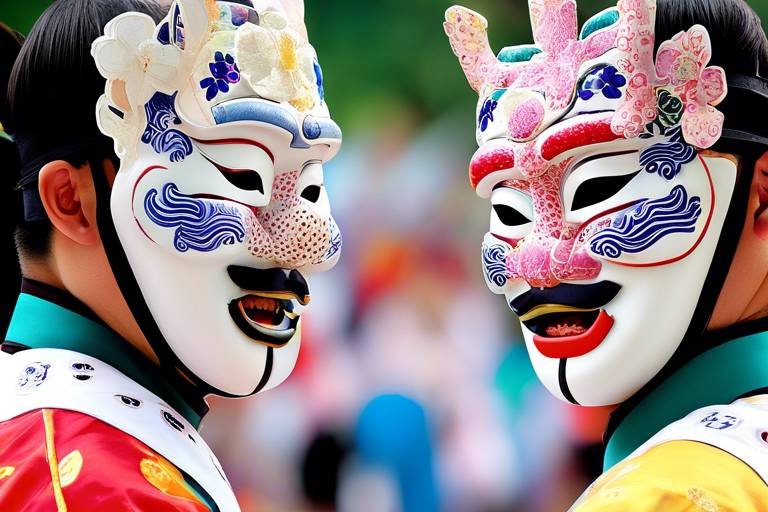



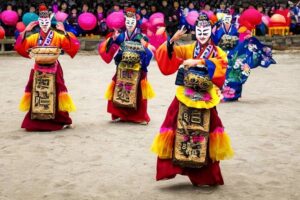

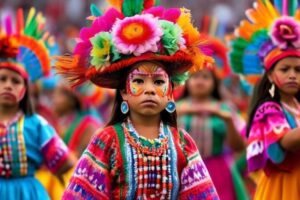

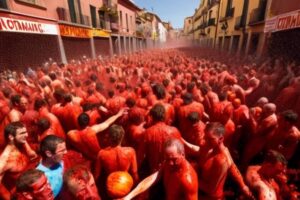

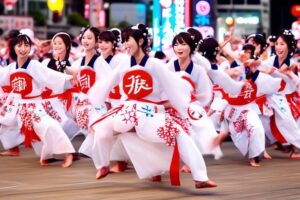

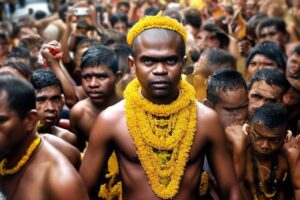
Post Comment